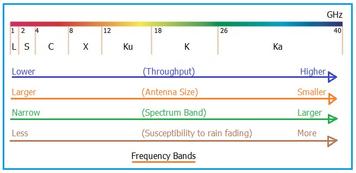Microwave vs Terahertz vs FSO: Key Differences Compared
Advertisement
This page compares Microwave, Terahertz, and Free Space Optics (FSO) technologies, outlining the differences between them. All three occupy different portions of the electromagnetic (EM) spectrum.
Terahertz frequencies reside between the microwave and free space optical ranges.
These technologies are chosen for various applications depending on how well they propagate through different mediums.

Let’s compare these three based on parameters like frequency, bandwidth, power, receiver noise figure and sensitivity, signal processing speed, data rate, size, power consumption, communication continuity, spreading loss, atmospheric loss, and applications.
Difference between Microwave vs Terahertz vs FSO
The following table highlights the differences between Microwave, Terahertz (THz), and FSO (Free Space Optics).
| Features | Microwave | Terahertz | FSO |
|---|---|---|---|
| Frequency range | 30 to 300 GHz | 0.1 to 10 THz | Greater than 300 GHz |
| Bandwidth | MHz up to several GHz | Tens up to hundreds of GHz | Tens of GHz |
| Transmit power | Watts | Milliwatts | Dozens of watts |
| Noise figure (Receiver) | ~ 5 dB | ~ 15 dB | ~ 15 dB |
| Sensitivity | -120 dBm | -48 dBm | -56 dBm |
| Signal processing speed | About Gbps | About 10 Gbps | About 10 Gbps |
| Data rate | At most 10 Gbps | About 100 Gbps | About 100 Gbps |
| Power consumption | High | Low | High |
| Size of system | Large | Small | Bulky |
| Communication continuity | All day | All day | Intermittent |
| Spreading loss | Low | Medium | High |
| Atmospheric loss | No clear effect at microwave frequencies | Water and oxygen molecules affect THz frequencies | Water and carbon dioxide molecules affect FSO |
| Applications | Television, satellite and radar communications, microwave point to point long distance LOS communication links | Spectroscopy, Pulsed imaging, communication, sensing, mine detection, security, organic material detection, bio-chemical agent detection etc. | Businesses and homes, inter-satellite communication, disaster recovery, hospitals, cellular communication back-haul, video conferencing, fiber communication backup, multi-campus connectivity in universities, links in difficult terrains, temporary links and more. |
Advertisement
 RF
RF


